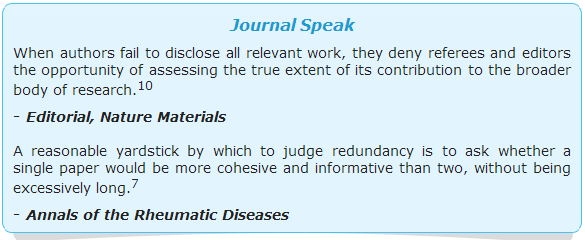The pitfalls of "salami slicing": Focus on quality and not quantity of publications

Imagine you have just completed a controlled study about a new intervention in a birthing center. You have two sets of results: one set on mothers and one on infants. Should the author write two papers—each reporting a different set of results—and send these papers to two different journals? Or consider a case where you are studying several closely related compounds.1 Should you write a separate paper for each compound?
The answer to both questions is no. Editors consider these as cases of “salami slicing”—unethically fragmenting the results of a single study and reporting them in multiple papers.
What is salami slicing?
Salami slicing refers to the practice of partitioning a large study that could have been reported in a single research article into smaller published articles.2 In other words, it means breaking up a single research paper into their “least publishable units,” with each paper reporting different findings from the same study. A set of papers are referred to as salami publications when more than one paper covers the same population, methods, and research question.3

A journal editor gave the following examples to illustrate a case of salami slicing.4 Can you determine which is the case of salami slicing?
Scenario 1 : A scientist begins a new line of research. The scientist has developed a new instrument for collecting data, one that is more precise than the current instruments. The main study may take a year or over to complete. The scientist submits a manuscript for publication describing the new instrument before completing the main study.
Scenario 2 : After determining the research question and setting the study design, a scientist collects data on three groups of participants. Two of the groups have different types of aphasia (Groups A and B), and one group is a control group. The scientist submits two manuscripts for publication: one comparing Group A with the control group, and the other comparing Group B with the control group.
- Career distortions. Salami slicing is widely regarded as a practice that researchers employ to increase their volume of publications, borne of the “publish and perish” culture.5 In the short term, salami science may allow scientists and researchers to progress faster in their careers or receive more funding than they actually merit, owing to the greater number of publications they can list on their resume.6,7 However, salami slicing can be harmful in the long term, since it diminishes the value of each publication. You may have managed to add a long list of publications to your name through salami publications, but if a committee were to review the body of work, they might conclude that the studies themselves are not substantial enough.
- Harm to science. Publishing unnecessary and repetitive information increases the amount of literature, but not the amount of knowledge. If closely related data from a single group is divided across several papers, readers who access only one of the papers may misinterpret the findings. Further, multiple reports may cause a set of findings to be given more importance that it deserves. For instance, in the example mentioned in the beginning, another researcher conducting a meta-analysis on the new intervention for birthing centers might erroneously assume that this intervention has been studied twice, rather than once.

Is it always wrong to report a single study through multiple papers?
In some cases where the original data-set is extremely large (e.g., a population-based study) and when the data-set takes years to collect and analyze, the authors have justifiable and legitimate grounds to report the research in more than one paper.6,8 However, each paper should address distinct and important questions.8 If the study is motivated and designed around a single hypothesis, its results should be presented to the readers as a single package, regardless of the size of the data-set. 4

Conclusion
A paper will have a greater chance of publication as a full-scale study, rather than a fragment of a larger study. Focus on the quality of your publications, not quantity. Salami slicing to increase the number of publications on your resume might only end up sabotaging your research career at a later stage.
For a quick and easy-learning video on salami slicing, click here:
Published on: Nov 04, 2013
Comments
You're looking to give wings to your academic career and publication journey. We like that!
Why don't we give you complete access! Create a free account and get unlimited access to all resources & a vibrant researcher community.

Subscribe to Conducting Research












